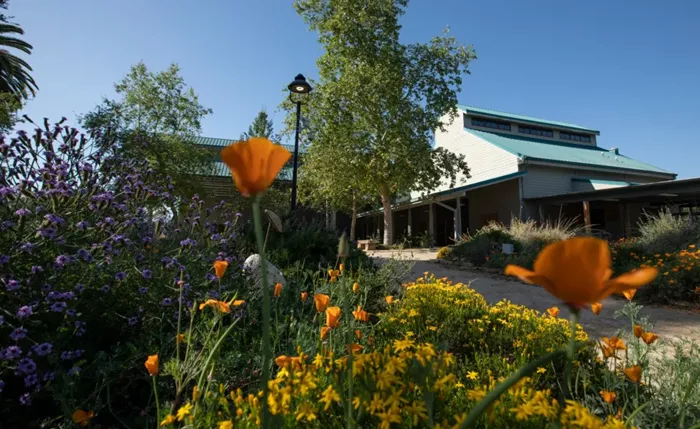The Arboretum and Botanical Garden at Cal State Fullerton recently hosted an exclusive “morning in the meadow” tour, offering members a chance to explore the diverse ecosystem of native grasses and plants led by horticulturist Mars Jordan.
The event highlighted the significant role of grasses, often overlooked in landscaping, for preventing erosion and supporting biodiversity. Jordan explained that grasses such as needlegrass, fescue, and oatgrass play vital ecological roles in wild habitats.
He also pointed out that some native grasses, like the purple three-awn, offer ornamental value but may not be suitable for lawns due to their dormancy periods.
The Arboretum’s meadow garden is home to various native plants, including blue dick, edible plants with purple flowers, and common golden star, known for its bright yellow blooms.
Jordan emphasized the importance of using natural grasses as lawn replacements, noting that many homeowners are turning to species like Festuca rubra and blue-eyed grass for their aesthetic appeal.
However, he cautioned that natural grasses often come with challenges, such as the need for regular weeding.
The meadow also attracts pollinators, with species like gooseberry bushes, yarrow, and miner’s lettuce enhancing its biodiversity. Hummingbird sage, California sweetgrass, and penstemon with striking purple flowers thrive in this rich environment, contributing to a lush and functional landscape.
Jordan advised those interested in creating meadows in their own yards to carefully consider the aggressive growth habits of some of these plants, but assured that with regular maintenance, they can be easily managed.
This tour highlighted the beauty and ecological benefits of native plants and grasses, encouraging visitors to embrace natural landscapes that support local wildlife and reduce the need for traditional lawn care. The event underscored the value of meadows in urban and suburban environments, showcasing the diversity and resilience of native flora.


